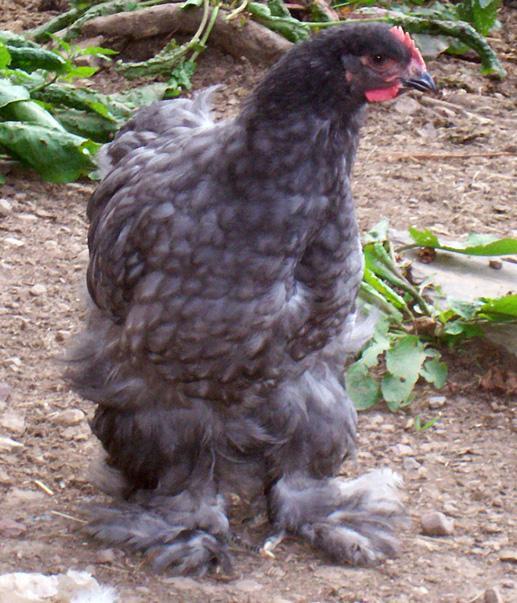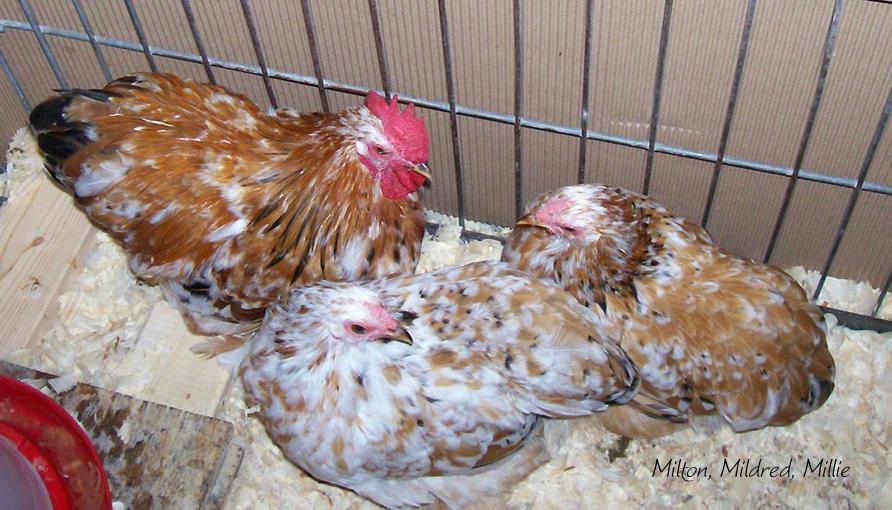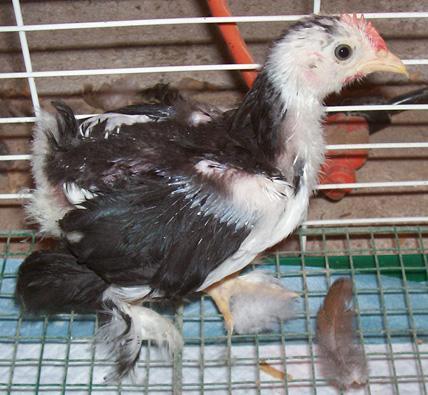Quote:
I'd like to make certain that I know exactly what shafting is, it refers to the center shaft being a LIGHTER? color than the rest of the feather, or is it darker? I know that the feedback that I have received on my Birchen roo is that he has shafting. He's on page 4.
Nancy, in all the pics of shafting, and in my own birds, I don't think I've ever seen any where the shaft is darker. I would be interested to know what causes shafting, and what is the proper way to breed away from it. I'm assuming shafting is the result of lack of pigment in the shaft, and not a result of poor feather quality causing the shaft to be more visible?
Shafting is indeed where the shaft of the feather is lighter. In a bird like a Brown Red, showing light shafting it's a lack of that good dark pigment all the way up the shaft of the feather. To breed away from it, you have to select against it, which isn't always easy to do. Most Brown Reds I see are overmarked, meaning that the males and females carry the lacing way too far down their fronts usually all the way between their legs. One thing that you could do is cross to Blacks. You'll get much less pattern in the first generation and they should have much improved shaft color. You could then work that back into your Brown Reds. The Brown Red male and the Lemon Blues in the most recent photos all display shafting so some good examples of what to look for that you need to breed away from.
I'd like to make certain that I know exactly what shafting is, it refers to the center shaft being a LIGHTER? color than the rest of the feather, or is it darker? I know that the feedback that I have received on my Birchen roo is that he has shafting. He's on page 4.
Nancy, in all the pics of shafting, and in my own birds, I don't think I've ever seen any where the shaft is darker. I would be interested to know what causes shafting, and what is the proper way to breed away from it. I'm assuming shafting is the result of lack of pigment in the shaft, and not a result of poor feather quality causing the shaft to be more visible?
Shafting is indeed where the shaft of the feather is lighter. In a bird like a Brown Red, showing light shafting it's a lack of that good dark pigment all the way up the shaft of the feather. To breed away from it, you have to select against it, which isn't always easy to do. Most Brown Reds I see are overmarked, meaning that the males and females carry the lacing way too far down their fronts usually all the way between their legs. One thing that you could do is cross to Blacks. You'll get much less pattern in the first generation and they should have much improved shaft color. You could then work that back into your Brown Reds. The Brown Red male and the Lemon Blues in the most recent photos all display shafting so some good examples of what to look for that you need to breed away from.








